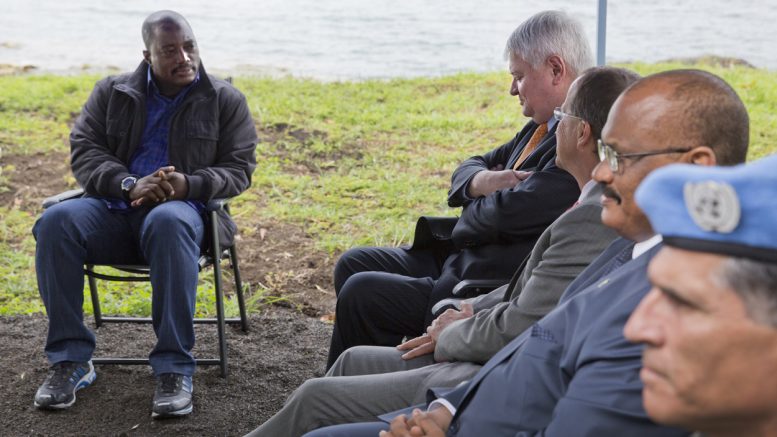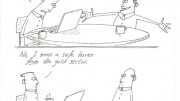We come out of the holiday period with good news out of the Democratic Republic of the Congo: the deep and increasingly violent divisions over the transfer of presidential power seem to have been resolved peacefully, with DRC President Joseph Kabila agreeing with an opposition group in meetings in Kinshasa on Dec. 31 to step down after a national election is held before the end of 2017.
If this preliminary agreement comes to fruition, it would be the first peaceful transfer of power since the war-torn country’s independence from Belgium in 1960.
Joseph Kabila, 45, came to power in 2001 after the assassination of his father Laurent-Désiré Kabila, who had ousted Mobutu Sese Seko via an insurgency that brought an end Mobutu’s 32-year reign.
DRC’s latest agonies stem from a series of wars from 1996 to 2003 that became collectively known by historians as the Second Congo War, or more informally as “Africa’s First World War,” which sucked in troops from nine African countries and involved more than 20 armed groups, who often used resource exploitation to fund their war efforts.
The war left more than 5 million dead from fighting, disease and starvation, particularly in the eastern provinces, created millions of displaced and traumatized civilians, and led to the UN’s largest and most expensive peacekeeping program.
The latest negotiations between the government and opposition led by Étienne Tshisekedi, 84, had been launched on Dec. 8 under the aegis of the Catholic Church, with Bishop Marcel Utembi chairing the Episcopal Conference overseeing the talks. A Dec. 25 deadline had already been missed, with the opposition having insisted Kabila resign immediately and leave public life.
Kabila’s second and constitutionally dictated final five-year term was due to come to an end on Dec. 20, 2016, but he had refused to resign, citing a May 2016 court ruling that allowed him to remain in power until a successor was chosen, which sparked the succession crisis that became deadly in mid-December.
During the ensuing street demonstrations against Kabila, government security forces killed somewhere between 50 and 104 protesters, according to various media reports.
Reporters said a sticking point in the negotiations was the government’s demand that it reserve the right to hold a referendum before any national election, although it isn’t clear what the referendum would be about.
Moving forward under the agreement, Kabila is due to appoint a member of the opposition as prime minister, and assemble a government led by a “national transition council” by March 2017.
While the government had insisted the country’s election infrastructure would not be ready until April 2018, the new agreement commits the country to holding national elections before the end of 2017, even as some worry the earlier voting will disenfranchise too many Congolese not yet on the voting rolls.
Miners are perhaps more aware than anyone of the gap between the country’s potential wealth from its superb natural-resource endowment and the reality of widespread poverty in the country, with 63% of the 82 million Congolese citizens living below the poverty line of less than one dollar per day in 2012, according to the World Bank.
Despite being relatively underdeveloped, the DRC’s extractive industries — mining, timber and oil and gas — account for 95% of exports, 22% of gross domestic product, 28% of government revenue and 11% of employment, according to figures by the Extractive Industries Transparency Initiatives.
Stellar mineral deposits and mines in the DRC include: Ivanhoe Mines’ Kamoa-Kakula copper deposit and Kipushi zinc project; Katanga Mining’s Kamoto copper-cobalt mine; China Molybedenum and Lundin Mining’s Tenke Fungurume copper-cobalt mine; Randgold Resources and AngloGold Ashanti’s 31 million oz. Kibali gold mine; Banro’s mines on the Namoya-Twangiza gold trend; and Glencore and Dan Gertler’s Mutanda Mining and its Mutanda copper mine.
In light of the lower political risk associated with the DRC, the publicly traded stocks of all the above companies were up substantially on the first trading day of 2017 — the first day of trading after the DRC succession agreement was reached.




Be the first to comment on "Editorial: Leadership crisis averted in DRC as Kabila to step down"